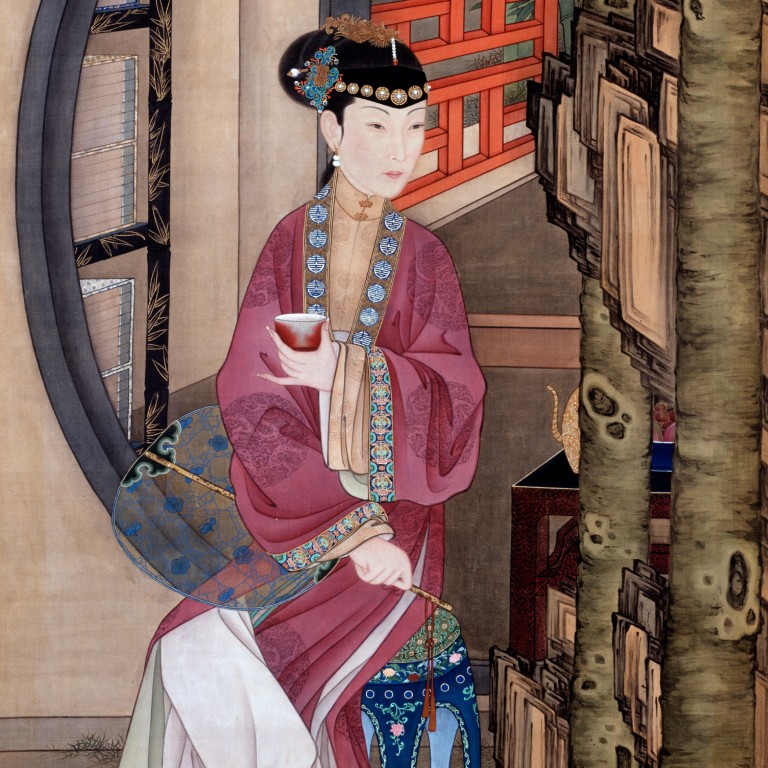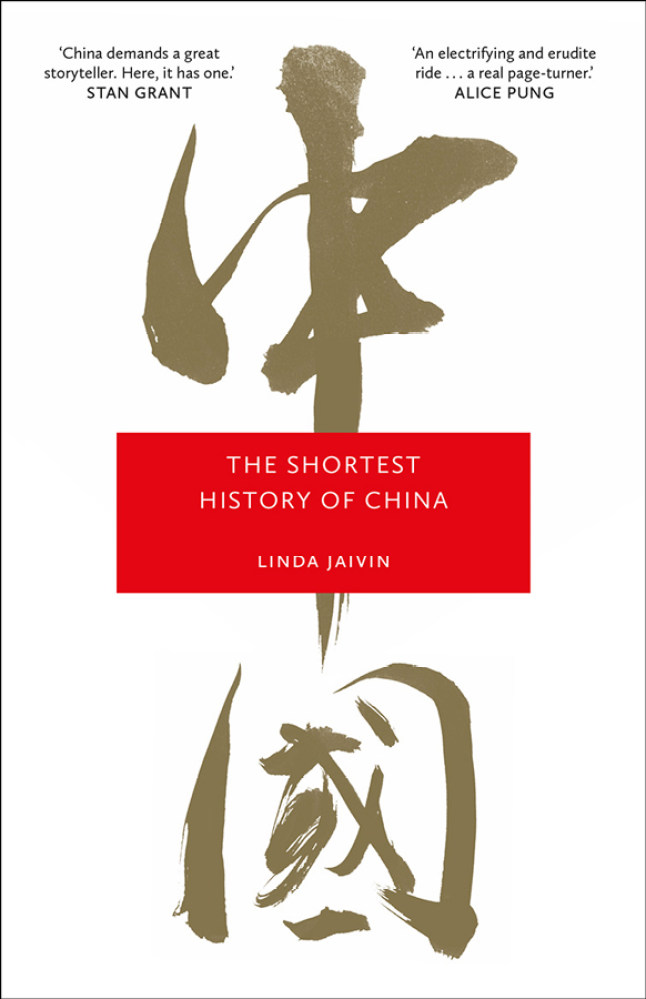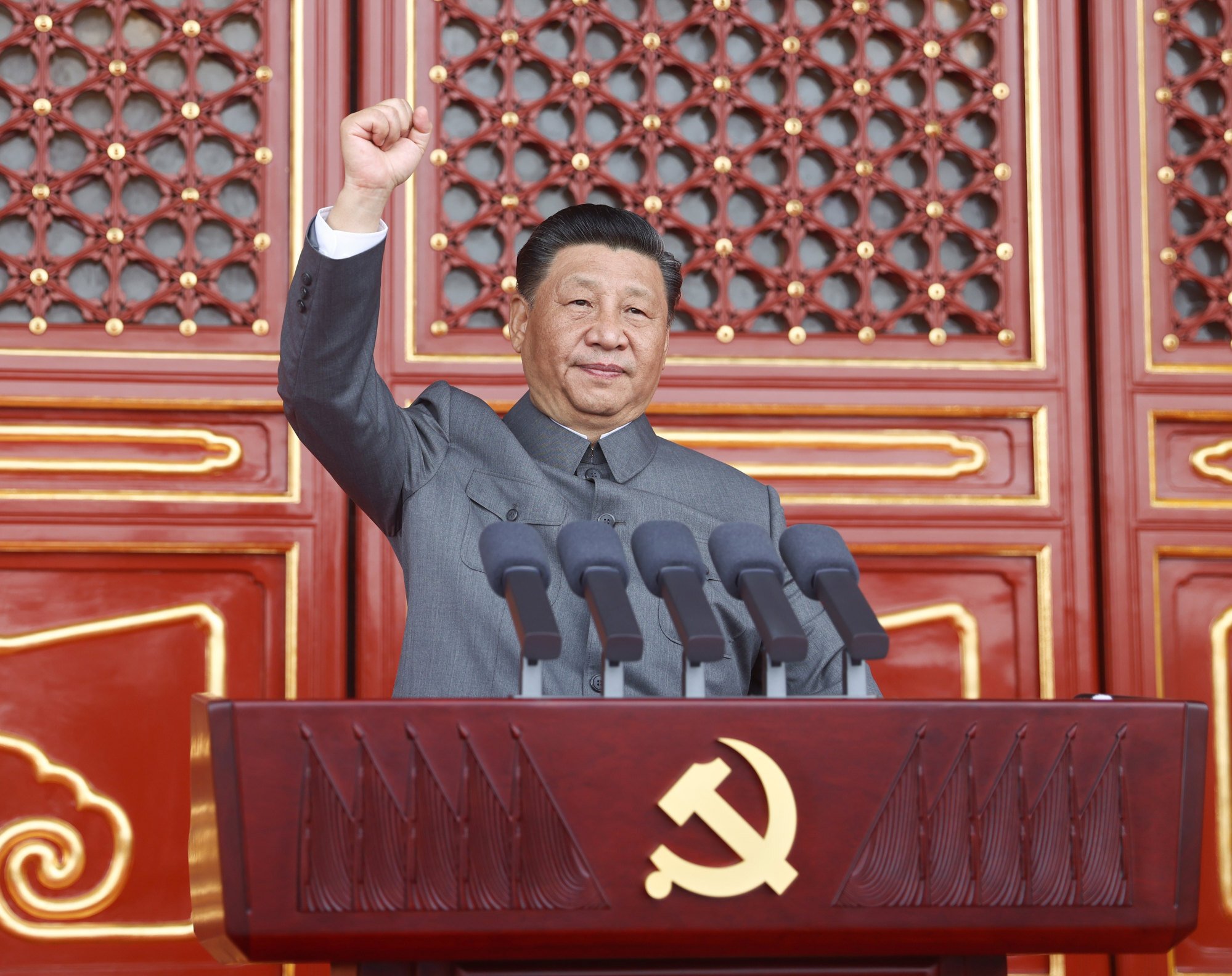
The Shortest History of China author Linda Jaivin on her goal: to tell ‘the whole story of China in a super readable way for normal people’
- In her 250-page book Jaivin focuses on individuals, women especially, such as the 13th century runaway bride whose inventions modernised textile production
- She often quotes poems to convey the emotional experience of history, explaining ‘With poetry, you get a … very different voice from that of the historian’
The Shortest History of China by Linda Jaivin, pub. The Experiment
Drinking at a Sydney bar in the 1990s, Linda Jaivin got into conversation with a fellow patron who, it transpired, worked in marketing. “You don’t have a brand,” he told Jaivin, after they had discussed her varied writing career. “That’s really terrible!”
“I couldn’t figure out exactly why it was terrible!” she jokes via Zoom from locked-down Sydney, bright-blue haired and flanked by overstuffed bookshelves. She does concede, however, that the idea of a then China journalist turning her hand to feminist erotic fiction – her first novel, Eat Me (1995), will ensure you never look at a supermarket fruit and veg aisle in the same way again – was a career shift that looked surprising from the outside, even as it made perfect sense to her. “Everyone,” she explains, “has different facets to them.”

Her publishers take a pragmatic view of her output. “We understand that what you do is you have big books, you have small books and you go all over the place,” they told her. “That’s fine. That’s your brand – your brand is that you don’t have a brand!”
Jaivin’s new book is in many ways deeply conventional – a chronological romp through China’s long history, ordered by dynasty. The conceit this time, however, is found in the book’s brevity: The Shortest History of China runs to just over 250 pages and about 60,000 words.
Thanked prominently in the acknowledgements of her new book is Professor Lea Williams, of Brown University; the man, Jaivin says, who first cultivated her interest in Chinese history and culture. Studying at Brown, in Rhode Island, in the 1970s, Jaivin was casting about for new courses. “I don’t care what the subject is,” she told friends, “just tell me about a course that’s really well taught. And somebody said, ‘Introduction to East Asian History’.”
Having never thought about China and Japan before, Jaivin now found herself hooked. She was sceptical about learning Chinese itself, after bruising experiences of language study at school – but Williams was dogged in persuading her. “He told me I wouldn’t truly understand Chinese history if I didn’t learn the language. And so I finally gave in and I’m so glad,” Jaivin says. “I thank him almost every day of my life!”

Jaivin’s enthusiasm for the language led her to Taiwan for further study, and then to Hong Kong and a job writing for Asiaweek magazine in the ’80s. “My career just sort of floated on from there,” she jokes.
Manifest in The Shortest History is a desire to challenge some of the norms of historical writing on China. Histories of this sort have almost exclusively been written by men, while, Jaivin comments, the work of female historians has tended to focus on more specific aspects of lived experience, “which is really valuable and great, but I was very concerned to subvert that dominant paradigm”, she says.
Jaivin’s book foregrounds the lives of women of diverse social standing. This version of China’s story is peopled with characters such as Huang Daopo (circa 1245-1330), who lived during the Yuan dynasty: “a village woman who was in a relationship where her in-laws were abusive and she just had enough”, Jaivin says.
“She ran away somehow on a boat to hide on Hainan Island [off China’s southern coast] and lived with the Li people for 23 years.” There she learnt from local women how to weave and dye cotton, and, when she finally returned to her home in Jiangsu, she taught local women the skills she had acquired during her years away.
She went on to invent a more efficient cotton gin, a three-treadle loom, and other machines for textile production. It is because of her that the area around Shanghai developed as a centre for textile production.

Jaivin takes care not only to highlight such stories, but also to bring into focus the emotional experience of living through history. Famine, war, flood and drought: these are events that often end up being treated as matters of statistical debate rather than real human tragedies, trailing individual suffering in their wake.
Jaivin focuses on the individual story, particularly through her recurrent use of poetry. “With poetry, you get a voice,” she says. “It’s a very different voice from that of the historian who tells us all about what the ruler had for breakfast or when they saw their ministers.”
Jaivin writes of the “trafficked young women” who became pawns in so-called princess diplomacy, which saw the Han and subsequent dynasties dispatching desperately young princess brides as peace offerings to nomadic rulers. She quotes the poem of one desolate new wife:
In a place far, far away from my home,
I was married to the King of Wusun.
The sky is my house,
Felt tent my bedroom.
So much I miss my early years in Chang’an,
I wish I could fly back like a swan.
Corruption has been a recurrent destabilising force in Chinese history, Jaivin says. “It creates a situation where there’s going to be rebellion, and you’ve lost your moral authority. You’ve lost your legitimacy. You’ve lost the mandate of heaven.” Xi’s crackdown on corruption shows his “profound consciousness of history”, says Jaivin.

But Xi’s approach to history goes beyond simply learning from mistakes. He recognises that to ensure the party’s legitimacy in the eyes of the people, you have to “own the narrative” of China’s history. Jaivin tells of how this narrative has changed: from the early 1960s until 2019, every school literature student in China read Sima Qian’s account of Chen Sheng, “the anti-Qin rebel who had ‘only to wave his arms for the whole empire to answer like an echo’”.
“You have to craft history in two ways,” she says of the party’s approach to historiography. “One is to reinforce the lessons that you want your people to take from it. And two, you want to craft it so that the entire thrust of the narrative shows that the historical end point is you.”
History in China, Jaivin says, has now been co-opted to encourage a “narrow nationalism”.
“Some people here who don’t know China, they’ll ask me: is your book being published in China?” She gives a wry laugh, an eye-roll and exclaims incredulously: “Yeah … Good luck!”
